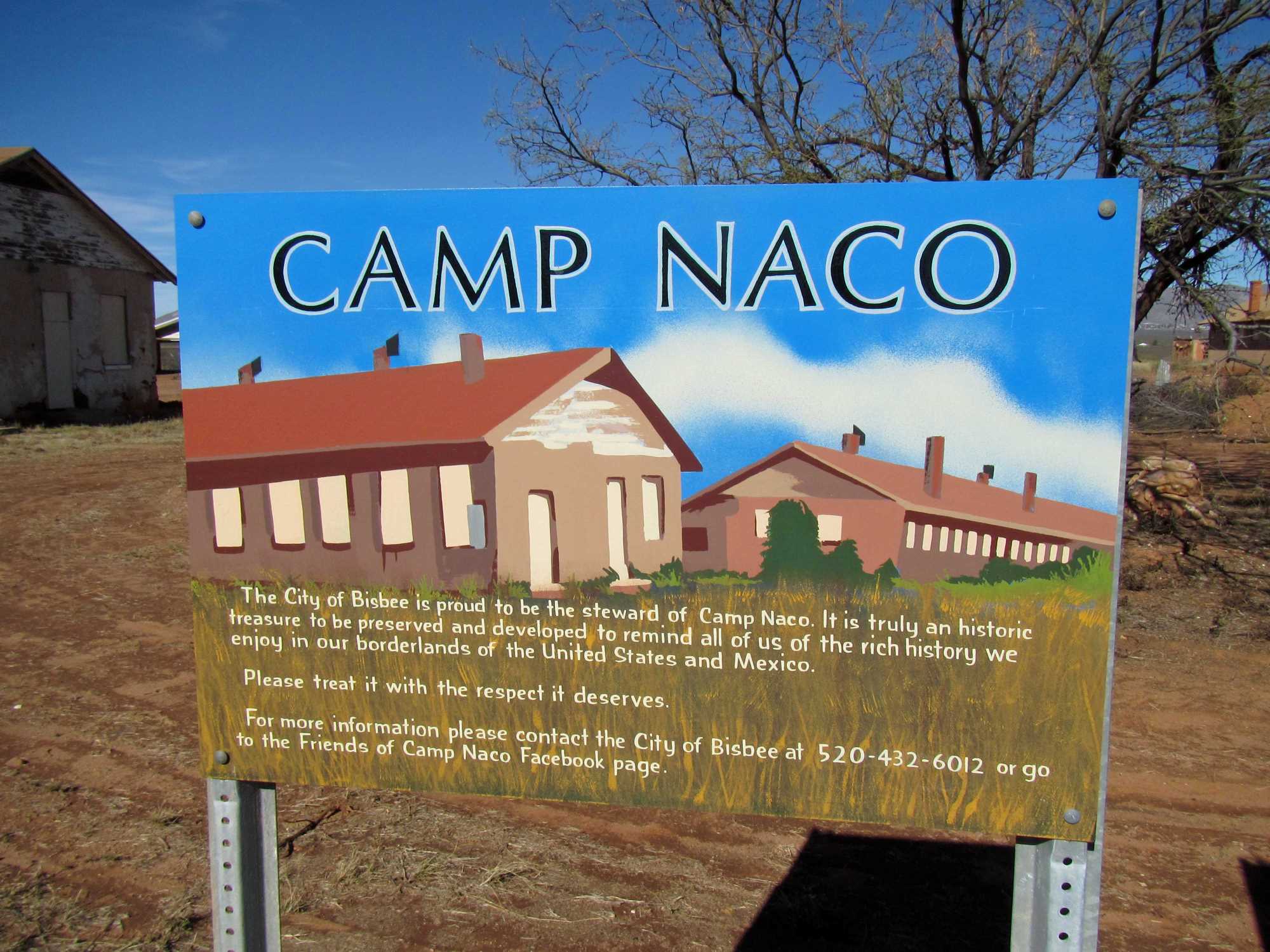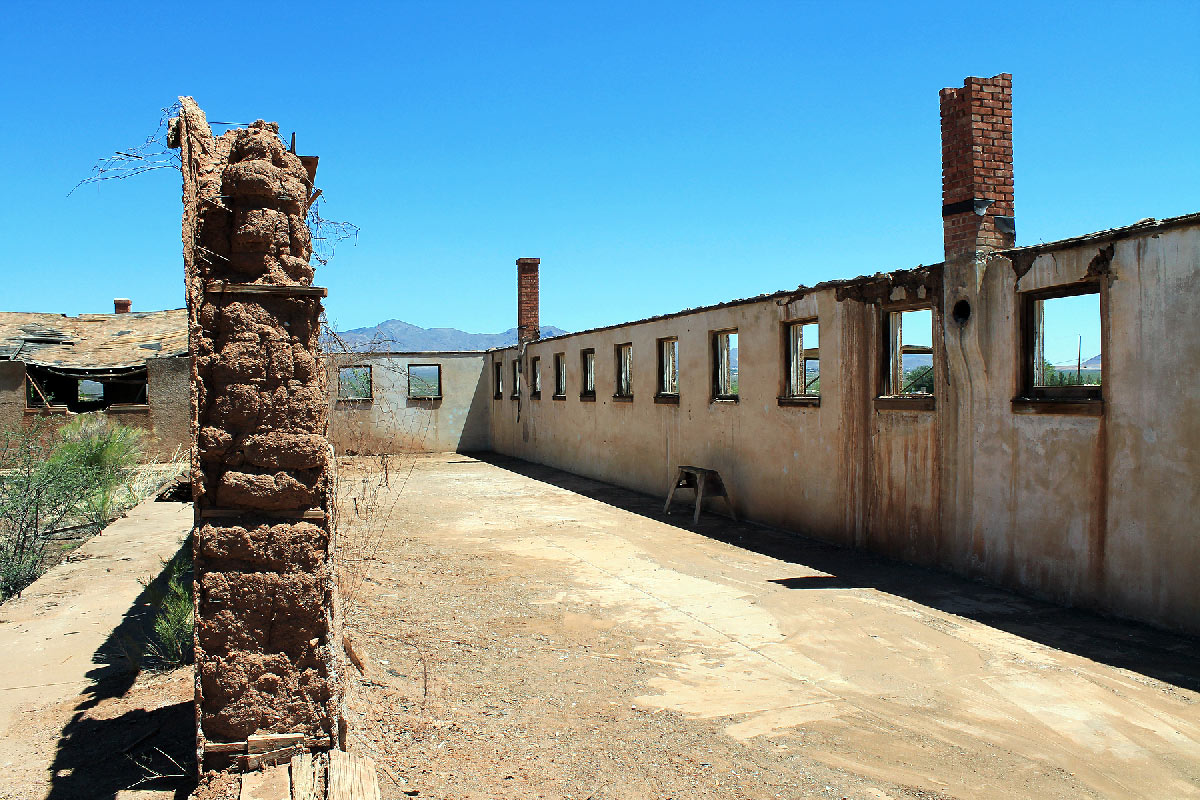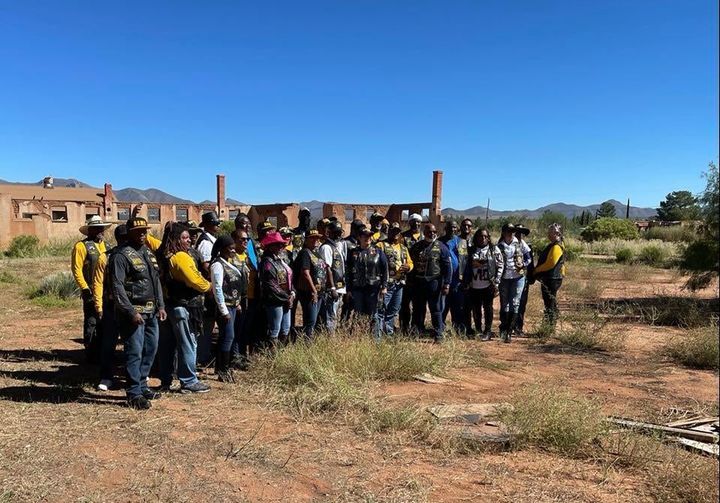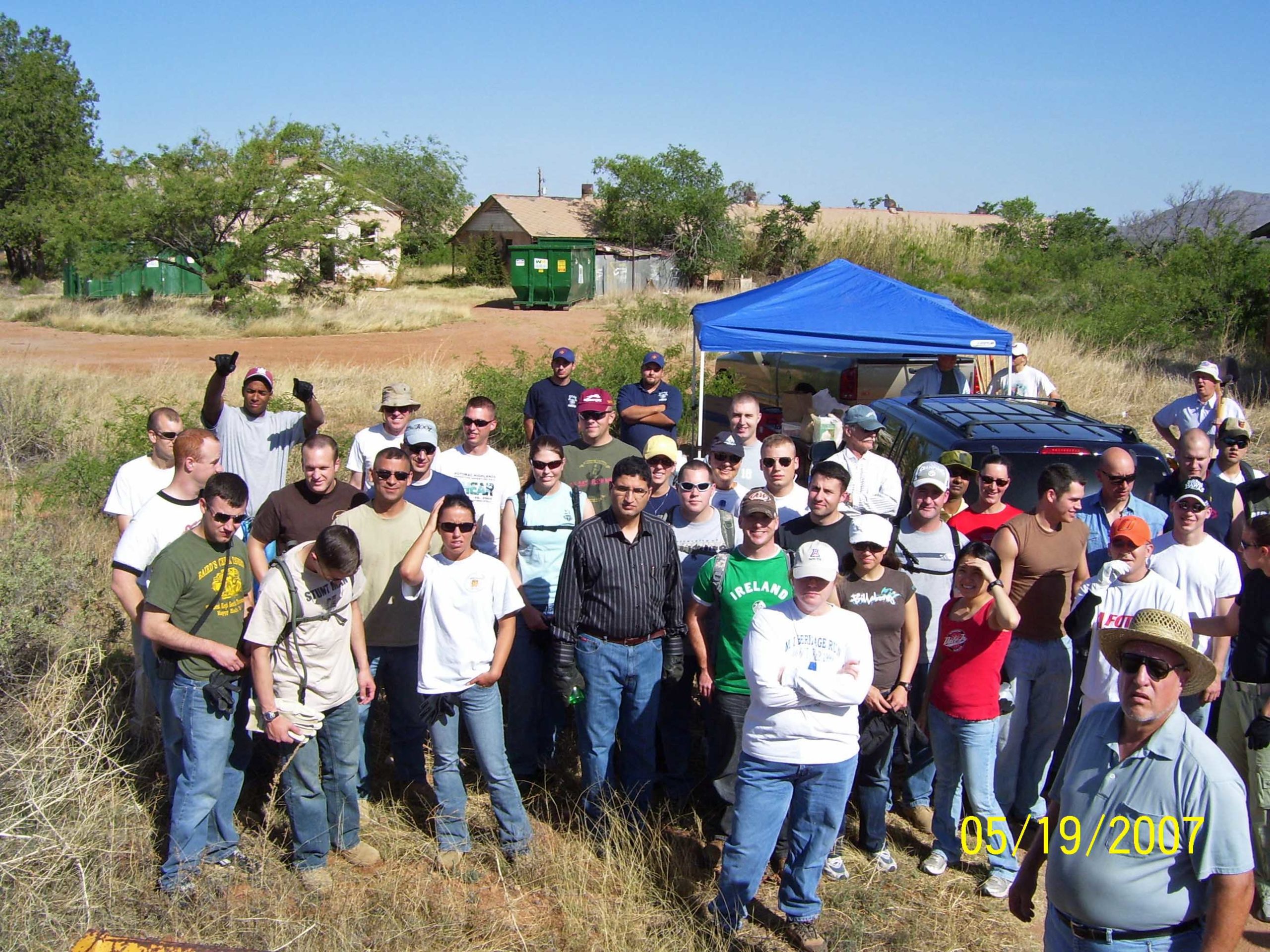- Home
- >
- Preservation Archaeology Blog
- >
- Camp Naco Is Back in the News
Camp Naco has been part of Archaeology Southwest’s advocacy since I met Becky Orozco in 2004. Becky’s passion for this place—and its place in history—is contagious. It has engaged me for nearly two decades.
So, what is Camp Naco, and why is it in the news?

The Camp’s adobe buildings were constructed by contractors for the US Army in 1919, and the Camp was decommissioned in 1923. The Civilian Conservation Corps leased the facility as a base of operations in 1935. Major portions of the Camp still stand today.
The Camp is located in Naco, Arizona, which many archaeologists will recognize as a location of multiple sites with extinct megafauna and Clovis projectile points from more than 12,000 years ago. Greenbush Draw, where those Paleoindian sites are located, is just 600 yards north of the Camp. Just 600 yards south of the Camp is the International Border, and that fact is foremost in Camp Naco’s story.
Camp Naco is topping this news cycle because it is on the National Trust for Historic Preservation’s (NTHP) list of the 11 Most Endangered Historic Places for 2022. The NTHP is helping focus attention on the urgent need to advance a long-delayed adaptive reuse program at Camp Naco before its rich physical presence melts back into the land.

The NTHP vets their candidates for their 11 Most Endangered List based on multiple criteria. To me, the two most important are national importance and potential for sustainable preservation success.
The Camp Naco National Register District is of great national importance. African American history and United States military history have long intersected in this borderland region, and this is especially true at Camp Naco.
America’s military was segregated until a post-World War II executive order by President Truman in 1948. African Americans, known as Buffalo Soldiers, had nevertheless played a key role in the US Army soon after the Civil War ended. They served in a diversity of campaigns, including the suppression of Plains Indians in the US, the Spanish American War, and the US response to the Mexican Revolution along the US border. Because they were battle-ready from these deployments, African American battalions played a significant early role in World War I. After World War I, Buffalo Soldiers were assigned to Camp Naco.

Work over almost two decades has laid the groundwork for sustainable preservation success. Archaeology Southwest has been part of a coalition of preservation partners since 2004. The group came together as threats to Camp Naco increased. From arson to asbestos to economic boom and bust cycles (and of course a 21st-century pandemic), these seemingly never-ending threats were addressed by a devoted community-based team. Recognition by the NTHP and potential access to new and significant sources of funding offer real hope that the coalition will be able to achieve our preservation goals.
It’s essential that we break out of the keep it standing goals of the past two decades and shift to the keep it open everyday mindset that will bring new life to Camp Naco as it enters a new phase of service—as a community resource.

In partnership with the Naco Heritage Alliance, the City of Bisbee is pursuing a $1.2 million grant that could be a game-changer. The coalition envisions three key steps to open Camp Naco to the public and breathe new life into its historic buildings.
Rehabilitating the former hospital structure at Camp Naco is the essential first step in the staged process of adaptive reuse. Historic buildings thrive when they are in active use, and there would be a live-in Camp manager, office space for the manager, and space for a small museum.
The second goal is to take the best-preserved building—the former recreation center for the Camp officers—and give it new roofing and restore its windows so it can be a space for community meetings and events.
Third, the former Parade Ground at Camp Naco is important open space. Formally reestablishing that space and creating a special memorial to the Buffalo Soldiers will facilitate access for larger events. Restrooms, sidewalks, and lighting—along with some parking—would also be part of the Parade Ground development.
Being on the NTHP’s 11 Most Endangered List may sound like a scary, negative thing, but it is actually a huge opportunity. The Trust is expressing its confidence that this place is worth saving. Saving this special place means bringing people—the community—into a lively and living place.
It can happen, if we work together to bring this vision forward. Please watch the following video and then make a donation today.
One thought on “Camp Naco Is Back in the News”
Comments are closed.
I am the State Historic Preservation Chair for Daughters of American Revolution (DAR). We would like to help with Camp Naco. Who do I contact to speak about possible projects?